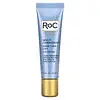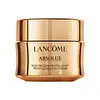What's inside
What's inside
 Key Ingredients
Key Ingredients

 Benefits
Benefits

 Concerns
Concerns

 Ingredients Side-by-side
Ingredients Side-by-side

Water
Skin ConditioningGlycerin
HumectantCetyl Alcohol
EmollientEthylhexyl Palmitate
EmollientPropanediol
SolventDimethicone
EmollientEthylhexyl Hydroxystearate
EmollientGlyceryl Stearate
EmollientHexyldecyl Stearate
EmollientPEG-100 Stearate
Niacinamide
SmoothingNylon-12
Hexylresorcinol
AntimicrobialSaccharomyces Cerevisiae Extract
Skin ConditioningTocopherol
AntioxidantHelianthus Annuus Seed Oil
EmollientAscorbic Acid
AntioxidantButyrospermum Parkii Butter
Skin ConditioningSorbitan Stearate
EmulsifyingSucrose Cocoate
EmulsifyingPanthenol
Skin ConditioningSorbitan Oleate
EmulsifyingPolysorbate 80
EmulsifyingSodium Acrylate/Sodium Acryloyldimethyl Taurate Copolymer
Emulsion StabilisingIsohexadecane
EmollientPhenoxyethanol
PreservativeDisodium EDTA
Acrylates/C10-30 Alkyl Acrylate Crosspolymer
Emulsion StabilisingEthylhexylglycerin
Skin Conditioning1,2-Hexanediol
Skin ConditioningCaprylhydroxamic Acid
Citric Acid
BufferingSodium Hydroxide
BufferingMica
Cosmetic ColorantCI 77891
Cosmetic ColorantWater, Glycerin, Cetyl Alcohol, Ethylhexyl Palmitate, Propanediol, Dimethicone, Ethylhexyl Hydroxystearate, Glyceryl Stearate, Hexyldecyl Stearate, PEG-100 Stearate, Niacinamide, Nylon-12, Hexylresorcinol, Saccharomyces Cerevisiae Extract, Tocopherol, Helianthus Annuus Seed Oil, Ascorbic Acid, Butyrospermum Parkii Butter, Sorbitan Stearate, Sucrose Cocoate, Panthenol, Sorbitan Oleate, Polysorbate 80, Sodium Acrylate/Sodium Acryloyldimethyl Taurate Copolymer, Isohexadecane, Phenoxyethanol, Disodium EDTA, Acrylates/C10-30 Alkyl Acrylate Crosspolymer, Ethylhexylglycerin, 1,2-Hexanediol, Caprylhydroxamic Acid, Citric Acid, Sodium Hydroxide, Mica, CI 77891
Water
Skin ConditioningGlycerin
HumectantCyclohexasiloxane
EmollientButylene Glycol
HumectantAlcohol Denat.
AntimicrobialButyrospermum Parkii Butter
Skin ConditioningStearic Acid
CleansingStearyl Alcohol
EmollientCetyl Alcohol
EmollientPalmitic Acid
EmollientPEG-100 Stearate
Glyceryl Stearate
EmollientCera Alba
EmollientSodium Stearoyl Glutamate
CleansingOctyldodecanol
EmollientCI 77891
Cosmetic ColorantCI 19140
Cosmetic ColorantCI 16035
Cosmetic ColorantZea Mays Oil
EmulsifyingMica
Cosmetic ColorantTocopheryl Acetate
AntioxidantEscin
TonicTocopherol
AntioxidantAscorbyl Palmitate
AntioxidantHydroxypropyl Tetrahydropyrantriol
Skin ConditioningHydrolyzed Linseed Extract
Skin ConditioningSodium Benzoate
MaskingPhenoxyethanol
PreservativeAdenosine
Skin ConditioningPEG-20 Stearate
EmulsifyingTrisodium Ethylenediamine Disuccinate
Polysorbate 80
EmulsifyingChlorhexidine Digluconate
AntimicrobialPanthenol
Skin ConditioningPentaerythrityl Tetra-Di-T-Butyl Hydroxyhydrocinnamate
AntioxidantTin Oxide
AbrasivePropanediol
SolventPropylene Glycol
HumectantIsohexadecane
EmollientCapryloyl Salicylic Acid
ExfoliatingAcrylamide/Sodium Acryloyldimethyltaurate Copolymer
Emulsion StabilisingMyristic Acid
CleansingSorbitan Oleate
EmulsifyingGeraniol
PerfumingPassiflora Edulis Seed Oil
EmollientRose Extract
Skin ConditioningRosa Damascena Flower Oil
MaskingRosa Centifolia Flower Extract
AstringentTetrasodium Glutamate Diacetate
Citronellol
PerfumingCitric Acid
BufferingPrunus Armeniaca Kernel Oil
MaskingOryza Sativa Bran Oil
EmollientParfum
MaskingWater, Glycerin, Cyclohexasiloxane, Butylene Glycol, Alcohol Denat., Butyrospermum Parkii Butter, Stearic Acid, Stearyl Alcohol, Cetyl Alcohol, Palmitic Acid, PEG-100 Stearate, Glyceryl Stearate, Cera Alba, Sodium Stearoyl Glutamate, Octyldodecanol, CI 77891, CI 19140, CI 16035, Zea Mays Oil, Mica, Tocopheryl Acetate, Escin, Tocopherol, Ascorbyl Palmitate, Hydroxypropyl Tetrahydropyrantriol, Hydrolyzed Linseed Extract, Sodium Benzoate, Phenoxyethanol, Adenosine, PEG-20 Stearate, Trisodium Ethylenediamine Disuccinate, Polysorbate 80, Chlorhexidine Digluconate, Panthenol, Pentaerythrityl Tetra-Di-T-Butyl Hydroxyhydrocinnamate, Tin Oxide, Propanediol, Propylene Glycol, Isohexadecane, Capryloyl Salicylic Acid, Acrylamide/Sodium Acryloyldimethyltaurate Copolymer, Myristic Acid, Sorbitan Oleate, Geraniol, Passiflora Edulis Seed Oil, Rose Extract, Rosa Damascena Flower Oil, Rosa Centifolia Flower Extract, Tetrasodium Glutamate Diacetate, Citronellol, Citric Acid, Prunus Armeniaca Kernel Oil, Oryza Sativa Bran Oil, Parfum
Ingredients Explained
These ingredients are found in both products.
Ingredients higher up in an ingredient list are typically present in a larger amount.
This ingredient is also known as shea butter. It is an effective skin hydrator and emollient.
Emollients help soothe and soften your skin. It does this by creating a protective film on your skin. This barrier helps trap moisture and keeps your skin hydrated. Emollients may be effective at treating dry or itchy skin.
Shea butter is rich in antioxidants. Antioxidants help fight free-radicals, or molecules that may harm the body. It is also full of fatty acids including stearic acid and linoleic acid. These acids help replenish the skin and keep skin moisturized.
While Shea Butter has an SPF rating of about 3-4, it is not a sunscreen replacement.
Shea butter may not be fungal acne safe. We recommend speaking with a professional if you have any concerns.
Learn more about Butyrospermum Parkii ButterCetyl Alcohol is a fatty alcohol. Fatty Alcohols are most often used as an emollient or to thicken a product.
Its main roles are:
Though it has "alcohol" in the name, it is not related to denatured alcohol or ethyl alcohol.
The FDA allows products labeled "alcohol-free" to have fatty alcohols.
Learn more about Cetyl AlcoholCi 77891 is a white pigment from Titanium dioxide. It is naturally found in minerals such as rutile and ilmenite.
It's main function is to add a white color to cosmetics. It can also be mixed with other colors to create different shades.
Ci 77891 is commonly found in sunscreens due to its ability to block UV rays.
Learn more about CI 77891Citric Acid is an alpha hydroxy acid (AHA) naturally found in citrus fruits like oranges, lemons, and limes.
Like other AHAs, citric acid can exfoliate skin by breaking down the bonds that hold dead skin cells together. This helps reveal smoother and brighter skin underneath.
However, this exfoliating effect only happens at high concentrations (20%) which can be hard to find in cosmetic products.
Due to this, citric acid is usually included in small amounts as a pH adjuster. This helps keep products slightly more acidic and compatible with skin's natural pH.
In skincare formulas, citric acid can:
While it can provide some skin benefits, research shows lactic acid and glycolic acid are generally more effective and less irritating exfoliants.
Most citric acid used in skincare today is made by fermenting sugars (usually from molasses). This synthetic version is identical to the natural citrus form but easier to stabilize and use in formulations.
Read more about some other popular AHA's here:
Learn more about Citric AcidGlycerin is already naturally found in your skin. It helps moisturize and protect your skin.
A study from 2016 found glycerin to be more effective as a humectant than AHAs and hyaluronic acid.
As a humectant, it helps the skin stay hydrated by pulling moisture to your skin. The low molecular weight of glycerin allows it to pull moisture into the deeper layers of your skin.
Hydrated skin improves your skin barrier; Your skin barrier helps protect against irritants and bacteria.
Glycerin has also been found to have antimicrobial and antiviral properties. Due to these properties, glycerin is often used in wound and burn treatments.
In cosmetics, glycerin is usually derived from plants such as soybean or palm. However, it can also be sourced from animals, such as tallow or animal fat.
This ingredient is organic, colorless, odorless, and non-toxic.
Glycerin is the name for this ingredient in American English. British English uses Glycerol/Glycerine.
Learn more about GlycerinGlyceryl Stearate is a mix of glycerin and stearic acid.
It is used to stabilize the mixing of water and oil ingredients. By preventing these ingredients from separating, it can help elongate shelf life. It can also help thicken the product's texture.
As an emollient, it helps soften skin and supports barrier-replenishing ingredients.
In cosmetics, Glyceryl Stearate is often made from vegetable oils or synthetically produced.
This ingredient may not be fungal-acne safe
Fun fact: The human body also creates Glyceryl Stearate naturally.
Learn more about Glyceryl StearateIsohexadecane is added to enhance texture, emulsify, and to help cleanse. It is an isoparrafin. It is a component of petrolatum.
Due to its large size, Isohexadecane is not absorbed by the skin. Instead, it sits on top and acts as an emollient. Emollients help keep your skin soft and smooth by trapping moisture within.
Isohexadecane is often used in products designed to help oily skin. It is lightweight and non-greasy while helping to moisturize. When mixed with silicones, it gives a product a silky feel.
Learn more about IsohexadecaneMica is a naturally occurring mineral used to add shimmer and color in cosmetics. It can also help improve the texture of a product or give it an opaque, white/silver color.
Serecite is the name for very fine but ragged grains of mica.
This ingredient is often coated with metal oxides like titanium dioxide. Trace amounts of heavy metals may be found in mica, but these metals are not harmful in our personal products.
Mica has been used since prehistoric times throughout the world. Ancient Egyptian, Indian, Greek, Roman, Aztec, and Chinese civilizations have used mica.
Learn more about MicaPanthenol is a common ingredient that helps hydrate and soothe the skin. It is found naturally in our skin and hair.
There are two forms of panthenol: D and L.
D-panthenol is also known as dexpanthenol. Most cosmetics use dexpanthenol or a mixture of D and L-panthenol.
Panthenol is famous due to its ability to go deeper into the skin's layers. Using this ingredient has numerous pros (and no cons):
Like hyaluronic acid, panthenol is a humectant. Humectants are able to bind and hold large amounts of water to keep skin hydrated.
This ingredient works well for wound healing. It works by increasing tissue in the wound and helps close open wounds.
Once oxidized, panthenol converts to pantothenic acid. Panthothenic acid is found in all living cells.
This ingredient is also referred to as pro-vitamin B5.
Learn more about PanthenolPeg-100 Stearate is an emollient and emulsifier. As an emollient, it helps keep skin soft by trapping moisture in. On the other hand, emulsifiers help prevent oil and water from separating in a product.
PEGS are a hydrophilic polyether compound . There are 100 ethylene oxide monomers in Peg-100 Stearate. Peg-100 Stearate is polyethylene glycol ester of stearic acid.
Phenoxyethanol is a preservative that has germicide, antimicrobial, and aromatic properties. Studies show that phenoxyethanol can prevent microbial growth. By itself, it has a scent that is similar to that of a rose.
It's often used in formulations along with Caprylyl Glycol to preserve the shelf life of products.
Polysorbate 80 is a surfactant and emulsifier. It is used to keep ingredients together, and prevent oils and waters from separating.
It is made from polyethoxylated sorbitan and oleic acid. This ingredient can be found in cosmetics, foods, and medicine. It is water-soluble.
Polysorbate 80 may not be fungal acne safe.
Learn more about Polysorbate 80Propanediol is an all-star ingredient. It softens, hydrates, and smooths the skin.
It’s often used to:
Propanediol is not likely to cause sensitivity and considered safe to use. It is derived from corn or petroleum with a clear color and no scent.
Learn more about PropanediolSorbitan Oleate is created from compounds in oleic acid and sorbitol.
It is used to stabilize a product by preventing ingredients from separating. Emulsifiers help keep ingredients together, such as oils and water.
According to a manufacturer, the ingredient Sorbitan Monooleate shares an INCI name with this one.
Sorbitan Oleate may not be fungal acne safe. It can also worsen oily skin.
Learn more about Sorbitan OleateTocopherol (also known as Vitamin E) is a common antioxidant used to help protect the skin from free-radicals and strengthen the skin barrier. It's also fat soluble - this means our skin is great at absorbing it.
Vitamin E also helps keep your natural skin lipids healthy. Your lipid skin barrier naturally consists of lipids, ceramides, and fatty acids. Vitamin E offers extra protection for your skin’s lipid barrier, keeping your skin healthy and nourished.
Another benefit is a bit of UV protection. Vitamin E helps reduce the damage caused by UVB rays. (It should not replace your sunscreen). Combining it with Vitamin C can decrease sunburned cells and hyperpigmentation after UV exposure.
You might have noticed Vitamin E + C often paired together. This is because it is great at stabilizing Vitamin C. Using the two together helps increase the effectiveness of both ingredients.
There are often claims that Vitamin E can reduce/prevent scarring, but these claims haven't been confirmed by scientific research.
Learn more about TocopherolWater. It's the most common cosmetic ingredient of all. You'll usually see it at the top of ingredient lists, meaning that it makes up the largest part of the product.
So why is it so popular? Water most often acts as a solvent - this means that it helps dissolve other ingredients into the formulation.
You'll also recognize water as that liquid we all need to stay alive. If you see this, drink a glass of water. Stay hydrated!
Learn more about Water